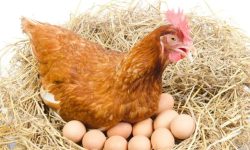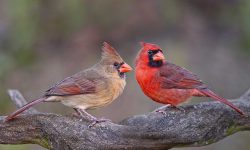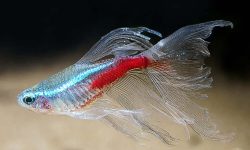Tree squirrels are among the most agile and visually charismatic mammals in North America’s woodlands and urban forests. Unlike their burrowing cousins, these arboreal specialists spend most of their lives off the ground, darting from limb to limb with astonishing grace. Their ability to leap long distances, cling to vertical trunks, and maneuver through a labyrinth of branches is a marvel of evolutionary adaptation. This article explores how tree squirrels navigate forest environments using advanced anatomical structures, keen senses, and sophisticated motor control—and compares them to other types of squirrels sharing the region.

What Are Tree Squirrels?
Tree squirrels belong to the subfamily Sciurinae, and in North America, the most common species include the Eastern Gray Squirrel (Sciurus carolinensis), Fox Squirrel (Sciurus niger), and American Red Squirrel (Tamiasciurus hudsonicus). These differ markedly from ground squirrels, which live in burrows, and flying squirrels, which glide from tree to tree using skin flaps.
Tree squirrels are specially adapted for arboreal life. Unlike ground squirrels, they have longer tails for balance, sharp claws for vertical climbing, and more developed hind limbs for explosive jumping. Flying squirrels, on the other hand, have less climbing strength but compensate with patagial membranes that allow gliding.
The Mechanics of Movement: Claws, Joints, and Muscles
The extraordinary mobility of tree squirrels begins at the structural level. They possess:
- Sharp, curved claws that provide secure grip on rough bark and narrow twigs.
- Flexible ankle joints capable of rotating 180 degrees, allowing them to climb down headfirst—something few mammals can do.
- Strong hind limbs with elongated bones and high muscle-to-mass ratios for vertical propulsion.
When a tree squirrel jumps, it launches from the hind limbs in a precise arc, often adjusting posture mid-air using tail position and limb extension. These fine motor adjustments allow for agile landings, even on narrow or moving targets.
Compared to ground squirrels, which rely on sprinting and burrow diving, tree squirrels have better-developed limb coordination and gripping strength. Flying squirrels can’t match this jumping precision but use controlled glides for longer, straighter trajectories.
Tail as a Balancing Tool and Rudder
The bushy tail of arboreal tree squirrels (e.g., Sciurus spp.) is a multifunctional anatomical adaptation that plays a critical role in aerial agility, thermoregulation, and predator evasion—but its primary biomechanical value lies in mid-air stabilization and postural control during complex arboreal locomotion.
Biomechanics of Counterbalance and Rotation Control
During a leap, the tail functions as an inertial counterweight, helping squirrels regulate angular momentum. This is crucial for adjusting pitch (nose-up or down), yaw (side-to-side orientation), and roll (body tilt) mid-flight. When a squirrel launches from one branch to another, subtle tail flicks and lateral shifts redistribute rotational inertia across the body’s axis, effectively acting as a biological gyroscope.
Motion capture studies and high-speed video analysis reveal that tree squirrels initiate tail dorsiflexion (lifting the tail upward) during launch and ventroflexion (dropping it down) near landing, optimizing both leap trajectory and stability. These movements enable fine-tuned trajectory correction—vital when landing on narrow or unstable branches.
Shock Absorption and Post-landing Stabilization
Upon impact, the tail also serves as a braking mechanism. By spreading and arching the tail backward, the squirrel dissipates kinetic energy and stabilizes its posture, preventing over-rotation or backward falls. This is especially important in cases of near-falls, where the tail can act as a secondary limb, regaining balance through ground contact.
Comparative Function in Flying Squirrels
Flying squirrels (Glaucomys spp.), though also arboreal, utilize their tails very differently. Their tail is flatter and less voluminous, shaped more like a horizontal airfoil than a counterweight. During glides, it acts primarily as a drag-producing rudder, helping to fine-tune glide angle, reduce descent speed, and steer mid-air via lateral flexion.
While tree squirrels use impulse-based tail adjustments to alter movement in short, ballistic hops, flying squirrels rely on continuous airflow modulation across a broad patagium (gliding membrane) supported by tail orientation. This makes their tail function closer to a fixed-wing flight surface, rather than a dynamic inertial tool.
Neuromuscular Control and Reflex Integration
The tail’s precision in both species reflects advanced neuromuscular coordination. Proprioceptive feedback from spinal reflex arcs and caudal vertebrae, integrated in the cerebellar vermis, ensures rapid and accurate adjustments in real time—especially under complex or unexpected conditions like branch swaying or mid-leap wind gusts.
Visual and Sensory Navigation
Arboreal squirrels navigate a highly variable, three-dimensional environment that demands rapid sensory integration and motor control. Their visual and somatosensory systems are finely tuned for this challenge, allowing for real-time environmental analysis and precise spatial calculation.
Binocular Vision and Depth Processing
Tree squirrels (e.g., Sciurus carolinensis) exhibit forward-facing eye placement, enhancing binocular overlap and enabling accurate stereopsis—the brain’s ability to extract depth from retinal disparity. Their visual cortex, particularly the occipital lobe, is adapted for rapid motion detection and trajectory estimation, which supports finely calibrated jump arcs between unstable substrates. Studies using optokinetic reflex testing and motion tracking suggest that their visual resolution rivals that of small primates in terms of motion prediction.
Moreover, their visual system is responsive to high spatial and temporal frequencies, allowing them to detect subtle branch movements or vibrations caused by wind—cues often used to assess structural stability before leaping.
Vibrissae and Tactile Feedback Systems
Beyond vision, facial and forelimb vibrissae (specialized tactile hairs) provide detailed spatial feedback. Each whisker is innervated by a high-density matrix of mechanoreceptors (e.g., Merkel cells, Pacinian corpuscles), which relay real-time input to the somatosensory cortex via the trigeminal nerve. These structures enable discrimination of microtexture and surface irregularities, which is critical when the animal’s grip shifts mid-leap.
The forepaw vibrissae further extend this sensing capability, acting almost like proprioceptive extensions, allowing squirrels to “feel” surfaces before full limb contact is made—essential for stable landings on narrow branches.
Multimodal Sensory Integration
What sets tree squirrels apart is the multimodal integration between visual, tactile, proprioceptive, and vestibular inputs. Their cerebellum plays a central role in coordinating these data streams to execute complex motor sequences. For example, during a leap, the vestibular apparatus (particularly the semicircular canals) maintains orientation, while proprioceptors in muscle spindles and Golgi tendon organs fine-tune limb extension to absorb impact forces.
This integration forms an adaptive sensorimotor feedback loop, allowing for real-time corrections to trajectory and posture—akin to a biological IMU (inertial measurement unit) used in robotics.
Comparative Perspectives
In contrast:
-
Ground squirrels possess robust olfactory and seismic sensing but show reduced binocular overlap and rely less on aerial coordination. Their cortical investment favors tactile and scent processing.
-
Flying squirrels (Glaucomys spp.) have enlarged corneas and pupils for nocturnal vision, with enhanced rod cell density but lower color sensitivity. Their vision is optimized for low-light glide path estimation, sacrificing some of the precision in close-quarters maneuvering seen in tree squirrels.
Advanced Sensory Systems: Bio-Sensors in Motion
What elevates tree squirrels beyond mere mechanical precision is their integration of biological sensors across the body. Their nervous system acts as a real-time processor of feedback from tactile, visual, auditory, and proprioceptive inputs:
- Proprioceptors in joints and muscles provide constant information on limb position, tension, and angle—essential for coordinating jumps and mid-air adjustments.
- Cutaneous mechanoreceptors in the paws detect texture, temperature, and pressure. This allows squirrels to evaluate grip quality mid-leap and adjust accordingly.
- Inner ear vestibular organs maintain balance during complex aerial maneuvers, especially in spinning or twisting landings.
This fine-tuned system enables squirrels to dynamically correct body orientation and velocity mid-motion—functioning almost like a living gyroscope. In comparison, ground squirrels rely less on proprioception due to terrestrial habits, while flying squirrels depend more on wide-field visual input and gliding trajectory estimation.
Such biofeedback-driven agility is now being studied in robotics, where squirrel-inspired algorithms are helping machines improve real-time spatial responses in unstructured environments.
Memory and Route Mapping
Landing Strategies and Mid-Air Adjustments
Landing safely requires a fusion of muscle control and anticipatory posture. Tree squirrels lower their bodies and extend front limbs to catch or brace on landing surfaces. Their padded feet and joint flexibility absorb impact, while their tail flares for stability.
If a branch sways or target location shifts during mid-air motion, squirrels correct course using tail twitching and rapid spinal adjustments. High-speed video analysis reveals they can twist torsos mid-leap to grab moving or angled branches.
Such control isn’t seen in ground squirrels, which rarely jump from heights. Flying squirrels land more gently via glide but cannot stop suddenly or redirect as sharply as tree squirrels.
Comparison Table: Tree Squirrels vs. Ground & Flying Squirrels
Feature |
Tree Squirrels |
Ground Squirrels |
Flying Squirrels |
|---|---|---|---|
Habitat |
Trees, canopy |
Underground, open fields |
Trees, nocturnal gliders |
Locomotion |
Leaping, climbing |
Running, digging |
Gliding |
Tail Use |
Balance, direction |
Communication |
Steering during glide |
Vision |
Binocular, daytime |
Good, ground-level |
Large, adapted for night |
Escape Strategy |
Jumping, canopy paths |
Burrowing |
Gliding to other trees |
Conclusion
Tree squirrels are marvels of arboreal engineering. Their unique combination of anatomy, agility, and intelligence allows them to perform gymnastic feats that few other mammals can match. When compared to their terrestrial and gliding relatives, tree squirrels stand out as the masters of vertical and horizontal navigation in the forest world.
Understanding how tree squirrels move helps not only in wildlife research but also in designing bioinspired robotics, studying sensory-motor coordination, and appreciating the complexity of seemingly simple woodland creatures. Watching them leap between branches is witnessing evolution’s craftsmanship in action.






